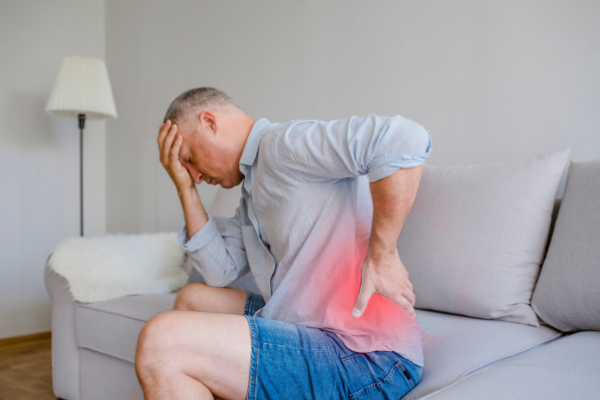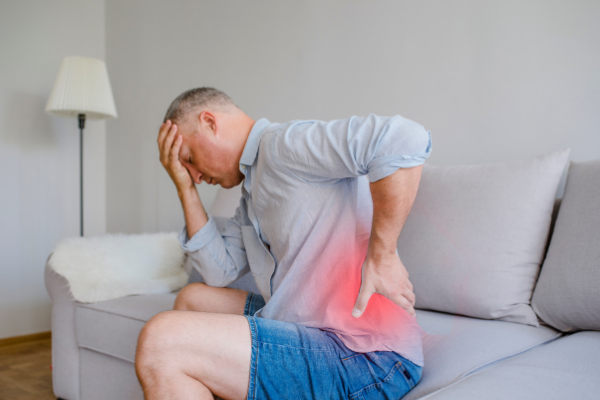Common Causes for Back Pain and Its Treatment Options

Back pain is incredibly common—and incredibly diverse. There are many different kinds of back pain with many different causes. In order to properly treat back pain, it’s important to pinpoint what’s causing it.
Some important facts about back pain:
-
Back pain affects people of all ages.
-
80% of people will likely experience back pain in their lifetime.
-
Back pain is a leading cause of disability worldwide.
-
Half of all Americans in the workforce describe having back pain each year and it’s one of the most common reasons people miss work.
Different Types of Back Pain
Diagnosing back pain can be tricky because there are many different types with various symptoms.
Axial Pain
Axial pain, or mechanical pain, is confined to a single region of the back. It can have a number of sensations from dull to sharp and it can be constant or can come and go.
Radicular Pain
Radicular pain can feel like an electric shock or a sudden burning sensation. This type of pain includes sciatica, a condition caused by compression or inflammation of a spinal nerve root. It’s called radiculopathy when numbness and weakness accompany the pain.
Referred Pain
Referred pain may feel like it’s moving around different areas of the back, sometimes feeling more intense than others. People often describe this type of pain as an ache or a dull pain, rather than a sharp feeling.
Common Causes for Back Pain
The back is a complex part of the body, made up of interconnecting and overlapping bones, joints, muscles, and ligaments. Pain can result from trauma, sports injuries, poor posture, arthritis, and muscle strain, among some of the more common reasons. Anatomical causes of back pain can include injuries to:
-
Muscles supporting the spine
-
Nerves from the spinal canal
-
Joints (facet joints) in the vertebrae
-
Shock-absorbing discs in the vertebrae
Tendons, ligaments, or bones
Pain can also have a medical cause that’s not musculoskeletal, including obesity, kidney problems, or blood clotting disorders.
Leg Length Discrepancy
Here’s a cause for back pain that you may never have thought about before: leg length discrepancy.
Forty to 70 percent of people have leg length discrepancy, which is when legs are of unequal length. When one leg is shorter than the other, it could be a difference of several millimeters up to a few inches.
An unequal length in the legs can lead to a person changing their posture, gait, and other body movements in their daily life. Even though this affects a large proportion of the population, people often don’t consider that it’s a source of back pain.

Doctors classify two types of leg length discrepancies. The first is structural, in which there is a physical difference between the same bone in each limb—for example, when a specific bone, like the femur, is shorter in one leg than in the other. The second type of leg length discrepancy is functional. This means the bones may be equal in length, but there’s a problem in symmetry, which is usually related to muscle tightness.
Leg length discrepancy is usually caused by one of two things. It may be congenital, meaning a condition present at birth that caused one leg to grow slower than the other or changes in your hip alignment. However, some people are simply born with one leg shorter than the other or with bow legs. Alternatively, leg discrepancy can be the result of a disease or traumatic injury that affected a growing bone.
Not every leg length discrepancy is a problem, but sometimes people find they develop significant lower back and hip pain because of it. When one leg is shorter than the other, it can mean the hips are also misaligned. The spine tries to compensate for this to even out the balance of the shoulders and it can lead to scoliosis. People who have leg length discrepancy can also experience a degeneration to the lumbar spine (the five vertebrae in the lower part of the spine) over time, which can change their gait and cause lower back pain.
Treatment for Leg Length Discrepancy
If you have a leg length discrepancy that is causing you pain, there are options to correct the disorder and reduce or even eliminate the pain altogether. You’ll first have to undergo a physical exam, and you may need imaging so that your doctor can measure your bones, see if you have any stress fractures, and diagnose the type of discrepancy. Learn more about how leg length discrepancy is diagnosed.
Your doctor may want to try non-surgical treatment methods, like shoe lifts, but for people who have severe back pain from this condition and for those who have large discrepancies above 1.5 centimeters, limb lengthening surgery is sometimes recommended.
Contact a Trusted Expert for Help
At Height Lengthening Institute, our specialists are dedicated to providing the utmost care for all our patients. We can provide the proper diagnosis and treatment for leg length discrepancy and other complex orthopedic conditions. Our experts, led by Dr. Shahab Mahboubian, are highly skilled and have received the best training from renowned orthopedic institutions.



